Multichannel selling is on the rise and is expected to exceed $575 billion by 2023. Research shows that 78% of customers use multiple channels when shopping, spending 1.7x more than those who shop on a single channel.
These statistics prove that you should not ignore cross-channel selling if you want to build a sustainable business. However, being present on multiple channels creates its own set of challenges, one of which is providing stellar customer support.
In this article, we discover the benefits and challenges of multichannel selling and how you can adapt this strategy to boost your business.
Understanding Multichannel Selling

Multichannel selling is the practice of offering products and services across multiple sales channels, both online and offline. It recognizes the diverse ways modern consumers shop and aims to maximize reach and revenue by leveraging multiple channels for sales and marketing.
This includes:
- Physical retail spaces like brick-and-mortar stores where customers can physically visit to check out products and make purchases
- Your own e-commerce website where you can showcase your brand and highlight your products’ features and benefits
- Different e-commerce platforms such as Amazon, eBay, and Walmart, where your products are showcased beside your competitors’
- Social media platforms like Facebook, Instagram, and TikTok, which are quickly becoming popular channels for customers to purchase their favorite brands
The key idea is to meet customers where they are and provide them with multiple convenient options to make purchases. Each channel may have its own unique audience and advantages, and businesses use various strategies to ensure a cohesive and consistent customer experience across all channels. This includes carefully managing inventory, pricing, branding, and customer support.
Benefits of Multichannel Selling
Being present on multiple e-commerce platforms is a lot of work but definitely worth every effort. The following benefits will give you enough reason to pursue this strategy.
1. Expanded Customer Reach

HubSpot’s State of Consumer Trends revealed that 71% of Gen Z discovered products on social media, while 50% of both millennials and Gen Z used search engines to discover new items. At the same time, 73% of consumers still prefer to purchase in-store.
Being present on multiple channels will allow you to reach a broader and more diverse customer base and tap into different customer segments with varying preferences. This expanded reach leads to increased brand exposure and access to new markets, ultimately driving higher sales and revenue.
2. Diversified Revenue Streams
Sellbrite Research discovered that retailers who use three or more sales channels generate over 143% more revenue than those who use fewer channels. The high revenue remains true even if sellers have a small inventory. In fact, sellers who had fewer than 706 products and sold on 3 or more channels, on average, had 158% higher revenue than similar merchants selling on 1–2 channels.
By spreading sales across multiple channels, you can reduce dependency on any single source, providing more stability and resilience in the face of market fluctuations. You can also mitigate risks that impact revenue, such as changes in a channel (e.g., algorithm updates on an e-commerce platform).
3. Improved Customer Convenience

Multichannel selling caters to the convenience of customers. It allows them to choose their preferred shopping method, whether online, in-store, mobile apps, or marketplaces. This flexibility enhances the overall customer experience, as customers can interact with the brand in ways that suit their lifestyles and preferences. Providing convenience leads to higher customer satisfaction and repeat business.
4. Data-Driven Decision-Making
Operating across multiple channels generates a wealth of data regarding customer behavior, preferences, and buying patterns. You can leverage this data to make informed decisions.
For example, analyzing customer data from different channels can help identify which products are performing best in specific markets or which marketing strategies are most effective. This data-driven approach enables you to refine strategies, optimize inventory management, and tailor marketing efforts for better results.
Challenges of Multichannel Selling
A customer who purchases on your Shopify store may reach out via Instagram DM to ask about their order status. Someone checking out products via Amazon may seek more details about the item on your brand’s Facebook page.
Selling on multiple sales channels is a complex operation and demands a lot from your business. Here are common challenges you may encounter.
1. Inconsistent Brand Messaging

It’s easy to control how you present your brand when you’re selling on one channel. However, maintaining a consistent brand image becomes difficult the more e-commerce platforms you choose to enter. Customers expect consistency as they hop from one platform to another while checking your products.
Unfortunately, different e-commerce platforms have their own requirements concerning image sizes, product descriptions, promotions, etc. If you update your products, you must ensure every platform carries the updated versions.
To avoid confusing brand messages, develop a firm understanding of each platform’s requirements and create an organized catalog where you can quickly review your messaging across these channels. Ensure your brand’s messaging is checked and updated regularly to prevent any outdated communication. You can also use a tool like ExportYourStore to automatically sync your products across different marketplaces.
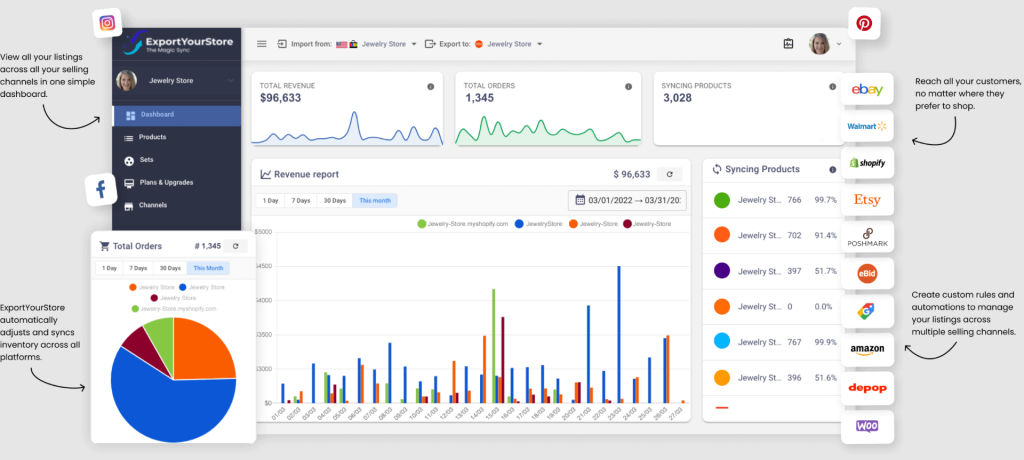
2. Uncoordinated Inventory
Keeping up with inventory is already challenging with one platform. Imagine selling on three or four channels. If you’re still using manual inventory management, adding more sales channels will make this process almost impossible.
Without a dedicated multichannel inventory software, it would be difficult to accurately estimate supply and demand, leading to overstocking and overselling. Tracking orders and gaining visibility on inventory levels across different warehouses would also be challenging.
Once you start multichannel selling, you can’t rely on offline spreadsheets. You must invest in inventory software, warehouse management software, or powerful multi-channel listing software that can link your inventory across channels and provide the necessary insights.
3. Fragmented and Slow Customer Experience

A survey revealed that 53% of customers complain that customer service is fragmented and not as seamless as they hope. Customers expect a consistent experience throughout their interaction with your brand.
When you’re selling from your own store, it’s easier to create a unified experience. But as you start adding multiple e-commerce platforms, especially third-party sites, it becomes harder to maintain that positive customer experience.
Customers also expect their concerns to be resolved within 10 minutes or less from the moment they raise them. However, customer data is often scattered across different channels, making it difficult to have a unified view of your customers. This can lead to disjointed customer experiences, slower customer resolutions, and less personalization.
Managing customer service across multiple channels can also be cost-intensive, and balancing the cost of providing support with the revenue generated from each channel is always a constant challenge.
To ensure customers receive a consistent experience regardless of the channels they choose, you should adopt a multichannel customer service strategy that includes using tools that gather all customer interactions in one unified place. Investing in a customer support tool will make it easier for your team to provide every customer with the same level of service.
OnSite Support centralizes all your customer interactions in one place so it’s easy for your team to provide the right support regardless of how your customer reaches out. Your team can quickly see each customer interaction from the moment they order, so customers benefit from a seamless and personalized experience.
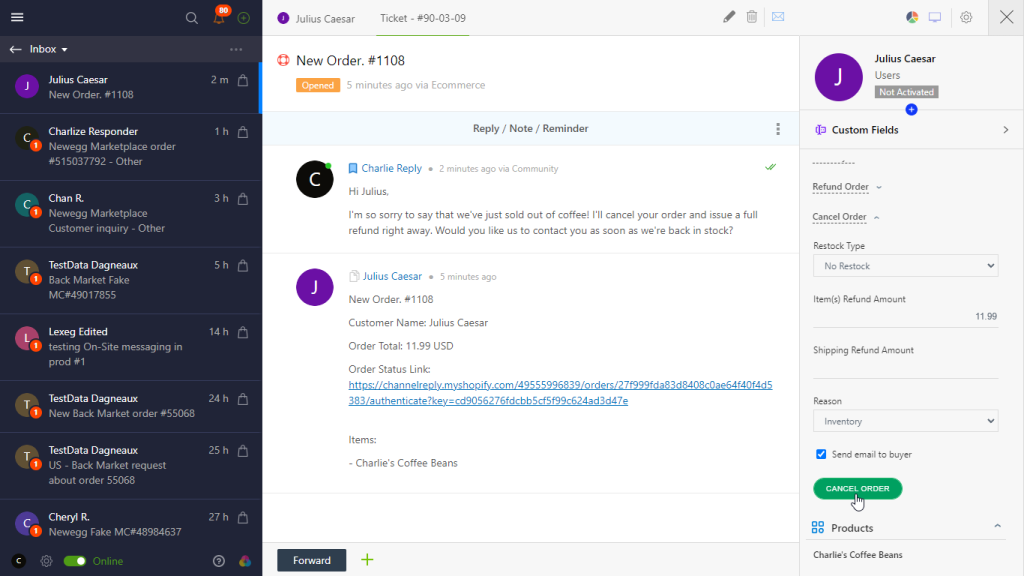
Above: Cancelling a Shopify order and issuing a refund from Onsite Support.
Below: An eBay message with order data in Onsite.
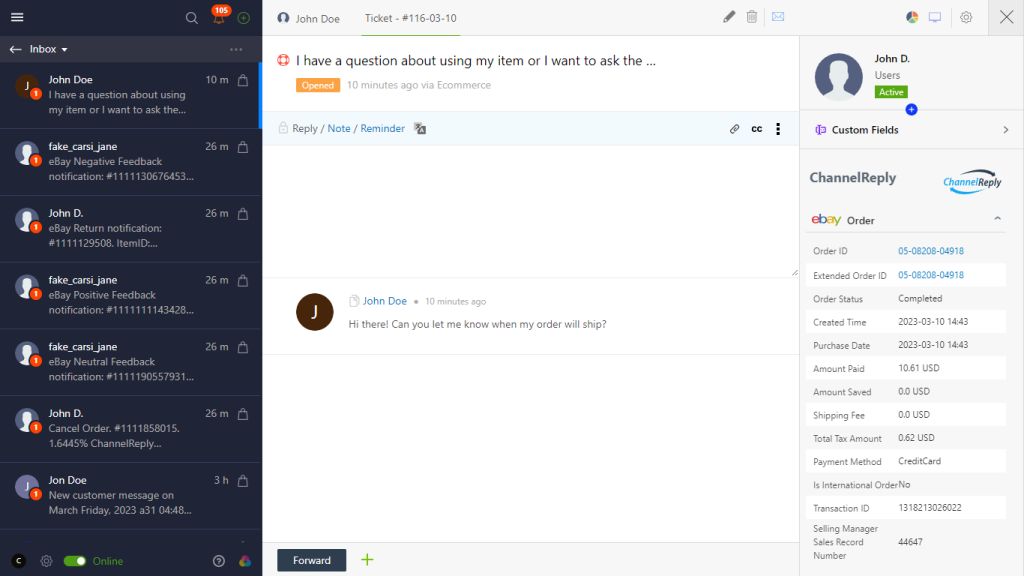
This increases customer satisfaction, prevents negative reviews, and reduces product returns due to dissatisfaction. It also increases your team bandwidth so they can do more without the extra cost.
Getting Started in Multichannel Selling
Now that you know the benefits of multichannel selling and how to solve its challenges, it’s time to pursue this lucrative opportunity. Here are tips to help you get more sales from cross-channel selling.
1. Select Your Multichannel E-commerce Platforms

Just because it’s a popular e-commerce platform doesn’t mean you have to be there. Unless you’re a big brand, you can’t afford to simultaneously launch across multiple platforms and risk overstretching your limited resources.
You should be strategic in the channels you enter and gradually scale as you become more successful. Start by knowing which platforms your target customers frequently visit. Do they spend time on social media? Which social media channel? Are they more likely to join Facebook groups or search through Amazon?
You can also spend time analyzing the competition and what other channels they’re using. Or you can find an alternative platform where there is less competition but more similar audiences who can potentially resonate with your products.
2. Create Different Strategies for Different Channels
Every sales channel is unique, and you need a distinct sales and marketing strategy for each. You can’t use a one-size-fits-all approach even if you’re targeting the same audiences across these platforms.
For example, Amazon is a highly competitive marketplace, and you need to employ SEO and attractive pricing strategies to stand out. On the other hand, Instagram is a highly visual platform, and you need attractive images and a curated feed to grab buyers’ attention.
Marketing promotions are also different for each channel. For example, email newsletters are great for promoting products from your own website, while user-generated content (UGC) works best for social media shops. Every e-commerce platform has its own marketing channel to help you reach the right audience. Leverage these channels.
3. Use the Right Tools and Automate Wherever Possible
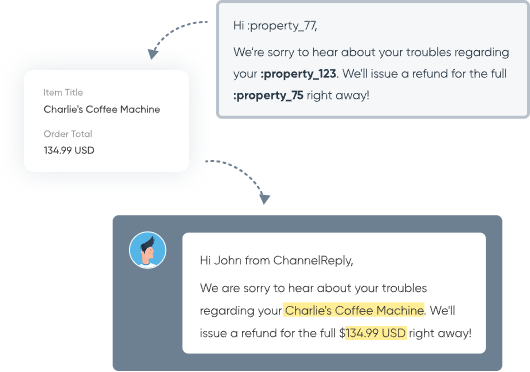
To streamline multichannel selling operations, consider utilizing e-commerce tools and automation solutions. These tools can help you efficiently manage inventory, pricing, listings, and order fulfillment.
For example, inventory management software can help maintain synchronized stock levels across all channels in real time. Additionally, many e-commerce platforms offer automation features for marketing, such as email campaigns and social media posting.
Leveraging these tools can save time and reduce manual work. Moreover, consider investing in analytics and reporting tools to track performance across channels and make data-driven decisions for optimization.
Build Loyal Customers Across Multichannel E-commerce Platforms with Onsite Support

Multichannel selling is a must-have in order to thrive in today’s competitive e-commerce environment. It doesn’t just boost your sales; it makes your brand relevant to your customers by being present in the platforms they frequently engage in.
When pursuing this strategy, one critical aspect you shouldn’t overlook is offering top-notch customer support. Customers who receive prompt and effective assistance are more likely to be satisfied with their shopping experience and become loyal advocates for your brand. Providing excellent customer service also builds a positive reputation for your business and fosters trust that leads to repeat purchases.
Onsite Support enables you to create a consistent and cohesive customer experience by unifying all of your customer interactions on a single platform. It supports multiple e-commerce and messaging platforms like Amazon, Walmart, eBay, Shopify, Etsy, Newegg, Back Market, WooCommerce, Facebook Messenger, Twitter/X, email, live chat, and more.
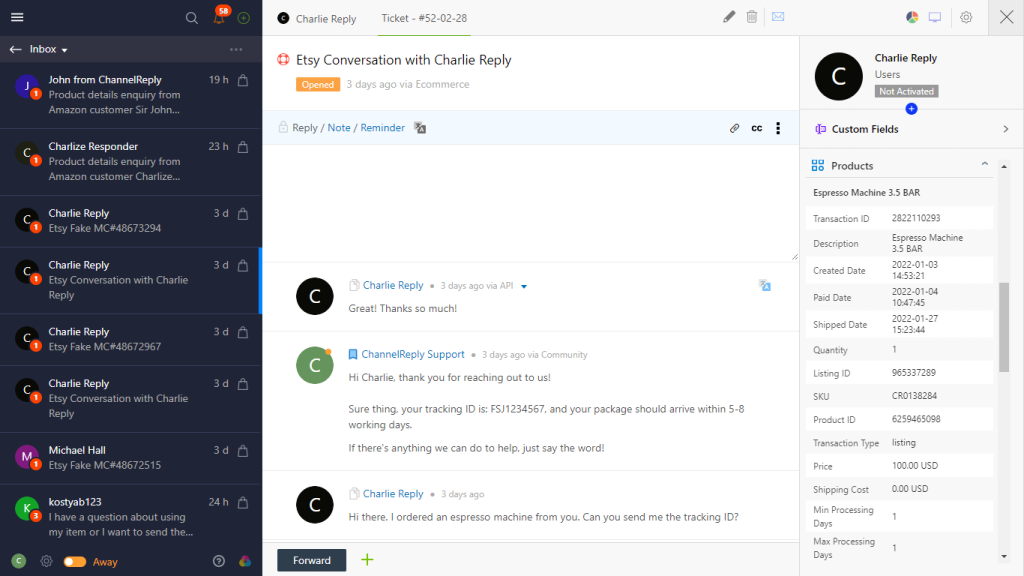
Above: An email conversation with an Etsy customer in Onsite Support, with data provided by Onsite’s free ChannelReply integration.
You can create a branded support site where customers can access self-service menus and dedicated service reps to help with their needs. You can also automate the most common tasks to free up valuable time so your team can focus on the tasks that matter the most.
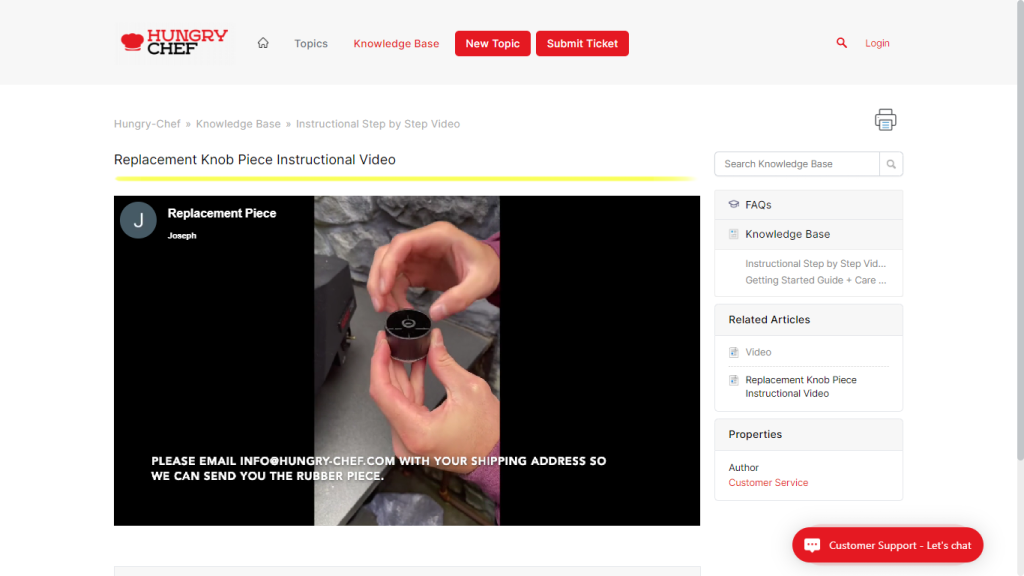
Above: A help video page in a branded Onsite Support knowledge base.
With a tool like Onsite Support, you can confidently enter as many e-commerce platforms as you like without worrying about making support more complex. Build your multichannel selling strategy today and let Onsite Support simplify customer service for your brand.





